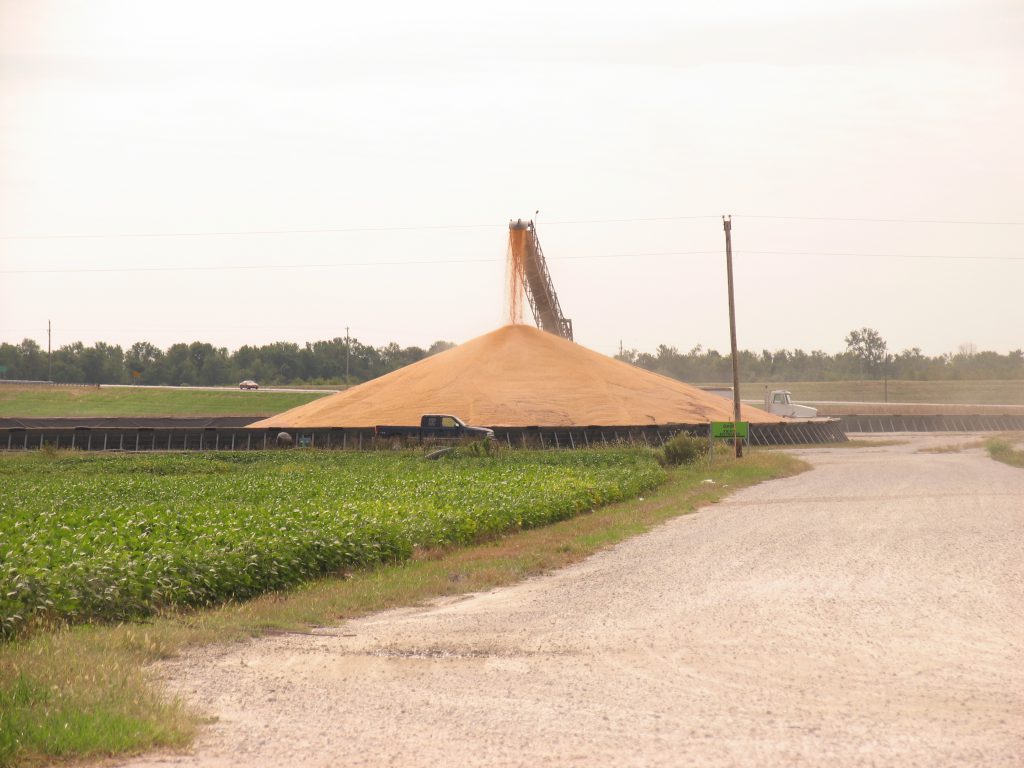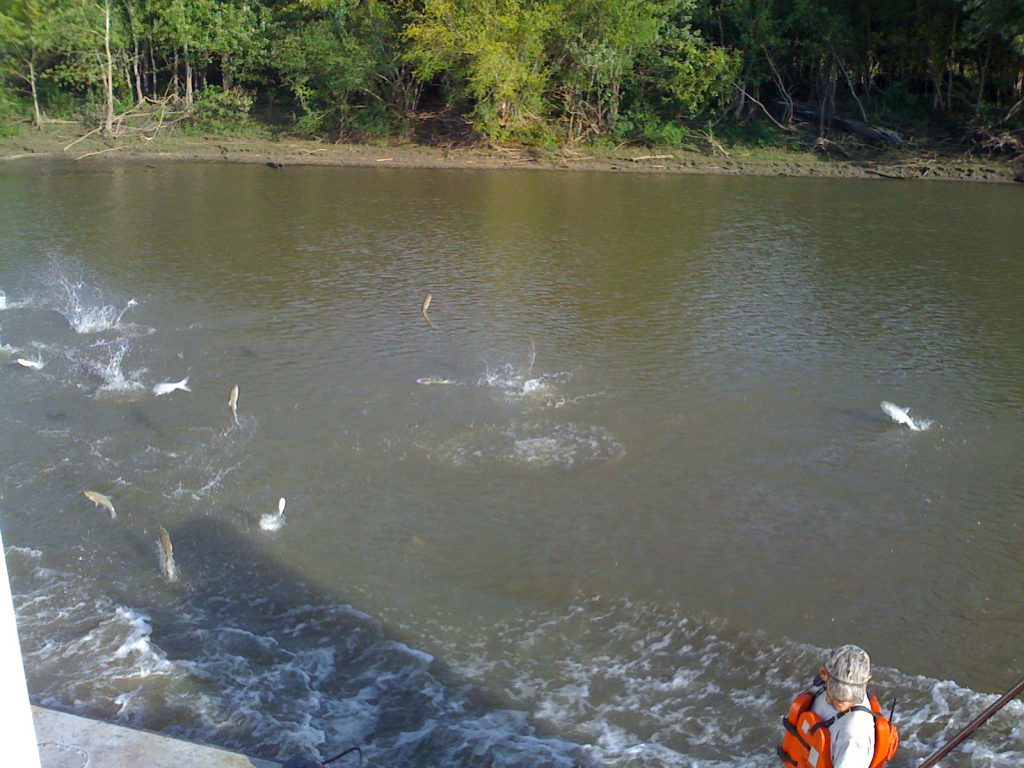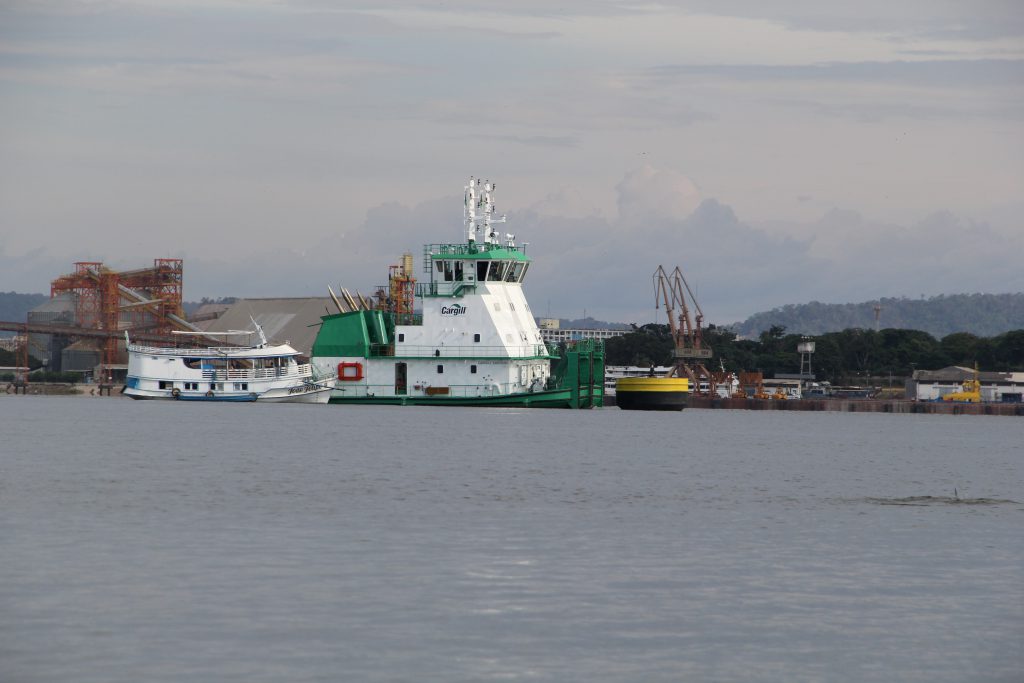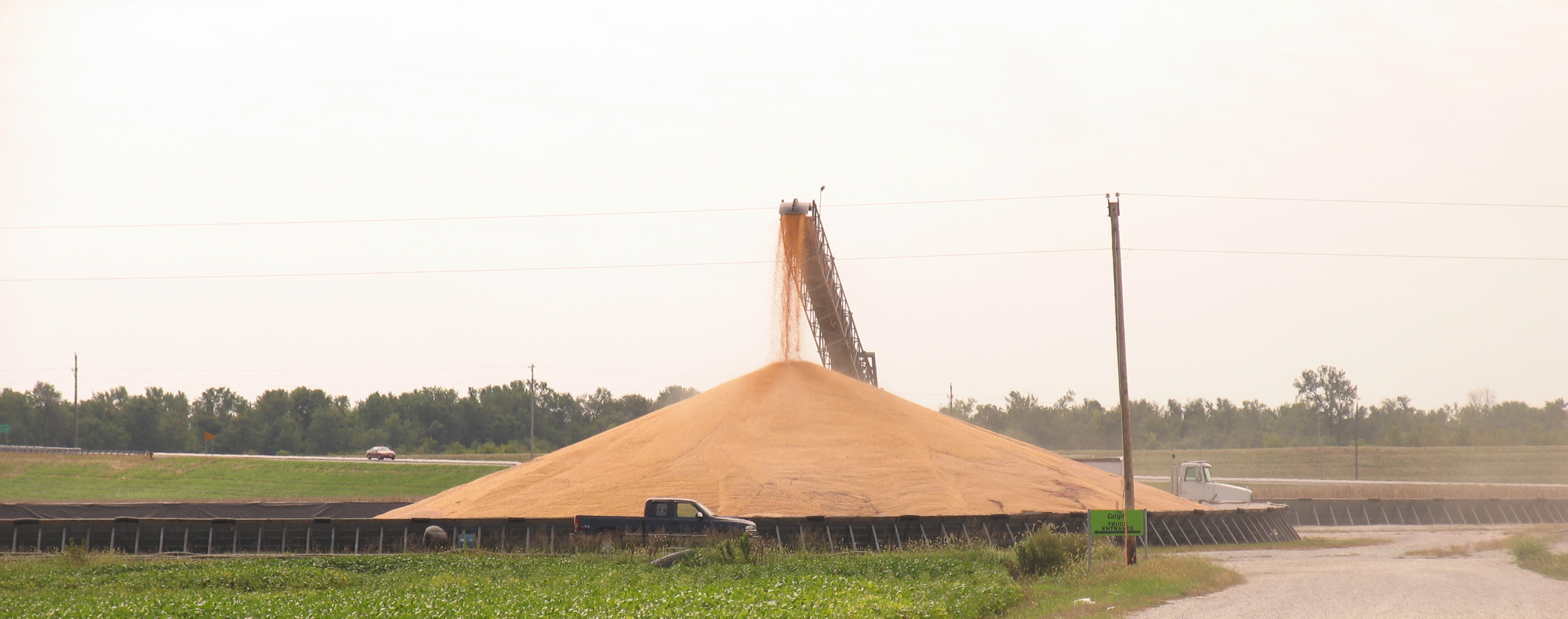Iron the common element of earth
in rocks and freighters Sault Sainte Marie—big boats
coal-black and iron-ore-red
topped with what white castleworkThe waters working together
internationally
Gulls playing both sides–Lorine Niedecker
From the poem “Lake Superior,” 1967
For the last twelve years, my professional and personal life has been split between the Midwest/Great Lakes metropolis of Chicago and Champaign-Urbana in the center of the state. The train I take between these two homes—on a rail line celebrated in folk-singer Steve Goodman’s “City of New Orleans”—passes through terrain covered by large, uniform fields of corn and soybeans. Cylindrical grain storage bins periodically rise out of the flat horizon like rockets that got stuck in a perpetual countdown, never to blast off.

There are many readymade images that someone like me projects onto these scenes. One of the strongest being the pastoral image of productive family farmers, feeding America with sweat and basic technology; a Grant Wood painting, in 3D living color. After a couple of years of inhabiting and moving through this territory, the surface of these readymade images started showing cracks. These cracks were accompanied by increasing doubts in my understanding of the geographies of the urban and the rural, the city and the country.
The disintegration of long-held perceptions about this landscape led my spouse and frequent collaborator, Sarah Ross, and me to initiate a modest curatorial effort that we called Regional Relationships, in 2010. The groundwork for this began a few years before, with a loose constellation of like-minded friends and colleagues living in various parts of the Upper Midwest [i]. A unifying theme for this group was the celebration of the Midwest Radical Cultural Corridor, a simultaneously real and desired place grounded in the past/present of radical unions, agrarian utopias, and indigenous refusals. These were different readymade images through which to understand the geography of rust belt cities, a depopulated Heartland, and, of course, all those miles of corn and soybeans. Sarah and I imagined Regional Relationships as a small way to find and circulate some of these other images. The curatorial mission of Regional Relationships was based on a loose conception of an exhibition without a fixed site. The site was to be a changing network of individuals and organizations, socially linked as communities of concern, physically connected by the routes of the United States Postal Service (and some international counterparts) [ii].

These other images were informed by an inseparable combination of textual (theory, journalism, literature and poetry) and embodied encounters (people, places, events). The late Marxist geographer Neil Smith wrote convincingly of the ways that capitalism generates uneven development while equalizing all space to its needs, rendering the “separation of town and country… a relic from the origins of capitalism” [iii]. William Cronon masterfully narrated the systemic ties between Chicago, the metropolis, and the vast hinterlands upon which its very core depends [iv]. Deborah Fitzgerald chronicled the logics that turned farms into factories [v]. James C. Scott described the reshaping of physical territory by nation-states to better serve its needs for control, replacing the unwieldy material of mud with its more navigable components: land and water [vi]. These narratives collided and combined with what we saw, heard, smelled and learned “on the ground.” Farmers told us about their experience with the consolidation and financialization of both land and the stuff they grow in it. Logistics engineers showed us the material reality of moving loaded barges from the upper Midwest to ports on the Gulf of Mexico, and then across oceans to China, Japan, Korea, and Europe. Along with the barges, we followed the soil, fertilizers, and pesticides that flow from corn and soy fields throughout the Mississippi River Watershed. Recent immigrants from the West African nation of Togo described the isolation they felt living in an otherwise all-white town on the Illinois River. This is the reality of globalization in the 21st century that is represented in neither slick depictions of “global cities” nor the dystopic narratives of mega-city slums.

So, what are some of these other images sent into the world by Regional Relationships? Matthew Friday (of the artist collective SPURSE) launched our project with a “Map Without Boundaries,” tracing the assembly of actors—human and non-human, industrial and microbial—that produced acid mine drainage in Appalachian waterways [vii]. With Claire Pentecost, we mailed out postcards depicting deformed maize plants in southern Mexico, the result of genetic contamination from transgenic corn originating in the United States. Artist Fereshteh Toosi (with comic artist/distributor Neil Brideau) told origin stories of an enigmatic noodle dish common to New Orleans and the Tidewater region of Virginia known as Yock. Working closely with social science scholar Faranak Miraftab, we produced a multi-media documentary that braided histories of landscape, industrial agriculture, and the social composition of a small town dominated by a large meatpacking plant [viii].
Our interest in understanding the forces that have shaped the US Midwest recently took us to the savannahs of Brazil’s interior. Seeing the current, and ongoing, deforestation of the Brazilian Cerrado, driven by the expansion of exportable soybeans, told us a lot about the destruction of the tallgrass prairie in the center of North America that happened some 100 years ago. The centers of Brazil and North America are non-contiguous parts of the same territory, but, of course, that territory is not all that they are. How does one (as an individual, as a collective) represent and articulate a territory that is legible, yet impossible to see in one image? How does one create cultural institutions that recognize territories as always temporary, always contingent? How can one be like the waters and the gulls, playing both sides?
__
[i] Eventually identifying itself as Compass Collaborators, the group produced two publications and a few contributions to thematic exhibitions, such as the show Heartland at the Smart Museum of Art. See http://midwestcompass.org/
[ii] See an interview with us, conducted by Abigail Satinsky for Bad at Sports for more background on the motives for Regional Relationships. http://badatsports.com/2011/critical-regionalism/
[iii] Smith, Neil. Uneven Development: Nature, Capital, and the Production of Space, 3rd ed., Athens, London: The University of Georgia Press, 2008.
[iv] Cronon, William. Nature’s Metropolis: Chicago and the Great West. New York, London: W.W. Norton & Co., Inc., 1991.
[v] Fitzgerald, Deborah K. Every Farm a Factory: The Industrial Ideal in American Agriculture. New Haven: Yale University Press, 2003.
[vi] Scott, James C. Against the Grain: A Deep History of the Earliest States. New Haven: Yale University Press, 2017. Bottom of Form
[vii] You can see Friday’s “A Map Without Boundaries,” and the other projects online at www.regionalrelationships.org.
[viii] Miraftab, Faranak. Global Heartland: Displaced Labor, Transnational Lives, and Local Placemaking. Indianapolis: Indiana University Press, 2016.
Featured Image: Corn being unloaded into a pile owned by Cargill for temporary storage just outside Beardstown, IL. 2010. This piece is part of our Sixty Regional project which partners with artists, writers, and artist-run spaces to highlight art happening throughout the Midwest and Illinois. Written by Ryan Griffis, an artist working and teaching out of the University of Illinois Urbana-Champaign, in collaboration with Beyond Alternatives, which focuses on artist-led organizing outside of large metropolitan areas.
This interview is part of Sixty Regional, an ongoing initiative by Chicago-based arts publication Sixty Inches From Center which partners with artists, writers, and artist-run spaces throughout the Midwest and Illinois to highlight the artwork being produced across the region. This work is made possible through the support of Illinois Humanities, which is supported in part by the National Endowment for the Humanities and the Illinois General Assembly through the Illinois Arts Council Agency, as well as by contributions from individuals, foundations, and corporations.
 Ryan Griffis is an artist currently teaching in the School of Art + Design at the University of Illinois, Urbana-Champaign. Under the name Temporary Travel Office, Ryan has created work and publications that attempt to use tourism as an opportunity for critical public encounters. The Temporary Travel Office has created work for venues such as the MAK Center for Art and Architecture, SPACES Gallery, Los Angeles County Museum of Art, Links Hall, and PS122. His writing has appeared in international print and online journals and in the edited volumes “Cities and Inequalities” (Routledge, 2015) and “Support Networks” (Chicago Social Practice History Series, SAIC/University of Chicago Press, 2014). Ryan’s recent work employs the form of documentary images and writing to address regional political ecologies and extractive agriculture.
Ryan Griffis is an artist currently teaching in the School of Art + Design at the University of Illinois, Urbana-Champaign. Under the name Temporary Travel Office, Ryan has created work and publications that attempt to use tourism as an opportunity for critical public encounters. The Temporary Travel Office has created work for venues such as the MAK Center for Art and Architecture, SPACES Gallery, Los Angeles County Museum of Art, Links Hall, and PS122. His writing has appeared in international print and online journals and in the edited volumes “Cities and Inequalities” (Routledge, 2015) and “Support Networks” (Chicago Social Practice History Series, SAIC/University of Chicago Press, 2014). Ryan’s recent work employs the form of documentary images and writing to address regional political ecologies and extractive agriculture.




